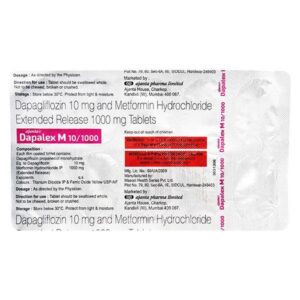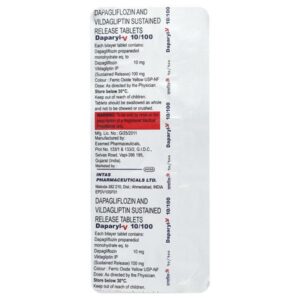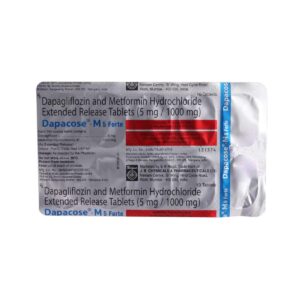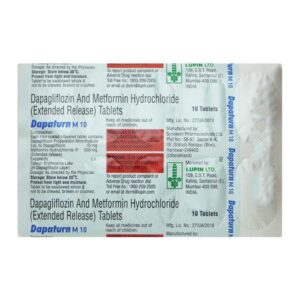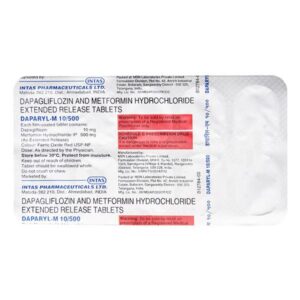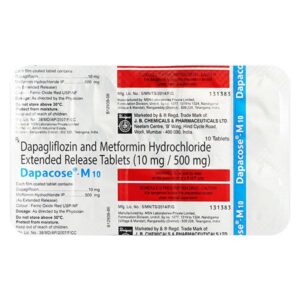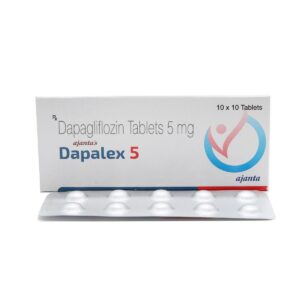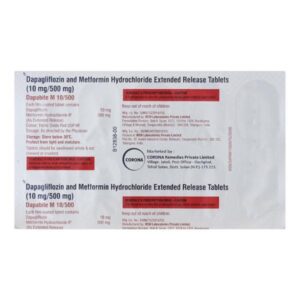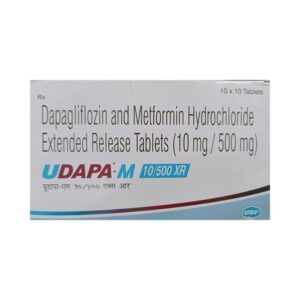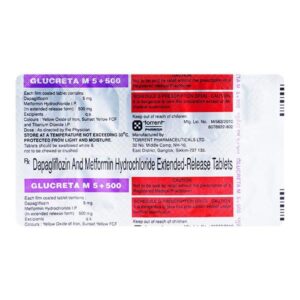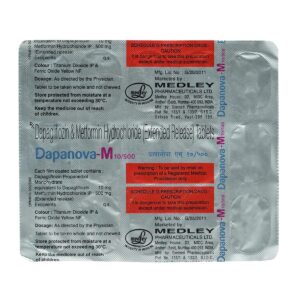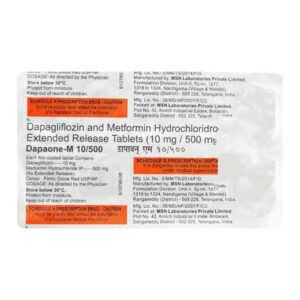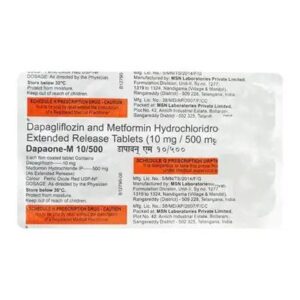METFORMIN + DAPAGLIFLOZIN
Metformin: Metformin is a drug commonly prescribed to treat type 2 diabetes. It belongs to a class of medications called biguanides. The primary use of metformin is to help control blood sugar levels in individuals with diabetes.
The mechanism of action of metformin involves several effects on the body. It primarily works by reducing glucose production in the liver and improving insulin sensitivity in muscle cells. This helps to lower blood sugar levels and improve the body’s response to insulin. Metformin also has some other beneficial effects, such as reducing appetite and promoting weight loss.
The dose of metformin can vary depending on the individual’s needs and the severity of their diabetes. Typically, the starting dose is low and gradually increased over time. The usual maintenance dose for adults is around 1500-2000 mg per day, taken in divided doses with meals. However, it is always best to follow the prescribed dose advised by your healthcare provider.
Like any medication, metformin may cause certain side effects. Common side effects include gastrointestinal disturbances such as nausea, vomiting, diarrhea, and abdominal discomfort. These symptoms usually occur at the start of treatment and often subside on their own. It is recommended to take metformin with food to minimize these side effects. Rarely, metformin may also cause lactic acidosis, a serious condition characterized by high levels of lactic acid in the blood. Symptoms of lactic acidosis include weakness, difficulty breathing, stomach pain, and unusual muscle pain. If you experience any of these symptoms, seek immediate medical attention.
It’s important to note that metformin is generally well-tolerated and considered safe for most individuals with diabetes. However, it is crucial to discuss any concerns or potential side effects with your healthcare provider before starting or modifying any medication regimen.
Dapagliflozin: Dapagliflozin is a medication that is used to treat type 2 diabetes. It belongs to a class of drugs called sodium-glucose co-transporter 2 (SGLT2) inhibitors.
The primary mechanism of action of dapagliflozin is to inhibit the SGLT2 protein in the kidneys. This protein is responsible for reabsorbing glucose back into the bloodstream. By inhibiting this protein, dapagliflozin allows excessive glucose to be excreted in the urine, thereby lowering blood sugar levels.
The usual recommended dose of dapagliflozin is 5 mg or 10 mg taken orally once daily. However, the dosage may vary depending on the individual patient’s needs and response to the medication. It can be taken with or without food.
Common side effects of dapagliflozin may include urinary tract infections, genital yeast infections, increased urination, low blood pressure, dizziness, nausea, and increased levels of cholesterol and triglycerides. It is important to note that patients with kidney problems and those taking certain diuretic medications may be at an increased risk of developing dehydration or low blood pressure when using dapagliflozin.
Severe side effects such as ketoacidosis (an extremely high level of ketones in the blood) and acute kidney injury have been reported in rare cases. Patients should seek immediate medical attention if they experience symptoms such as excessive thirst, frequent urination, confusion, rapid breathing, or abdominal pain.
It is important to consult with a healthcare professional before starting dapagliflozin or making any changes to the prescribed dosage. They can provide personalized advice and monitor for any potential drug interactions or complications.




